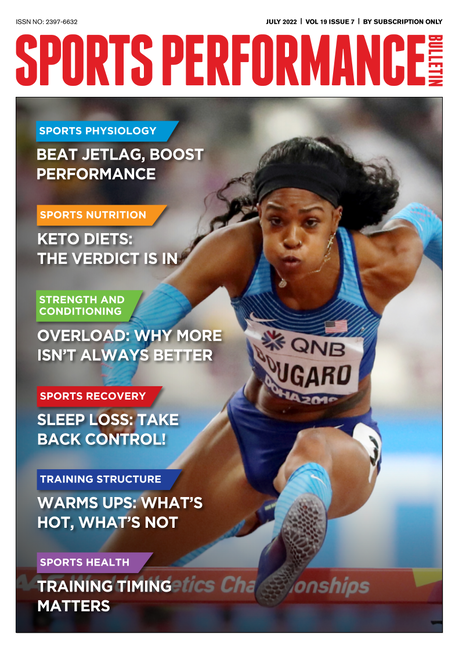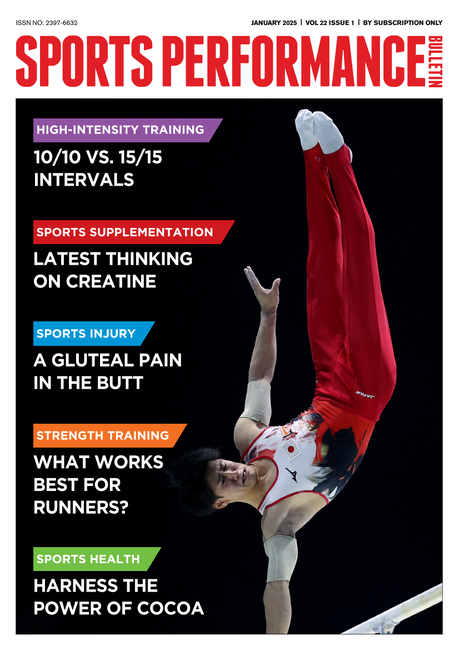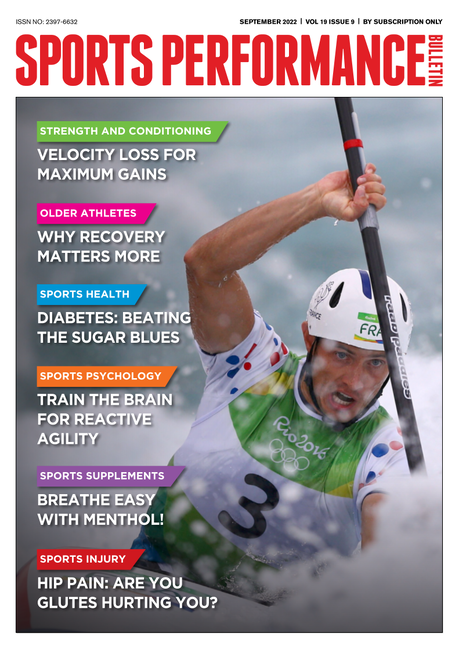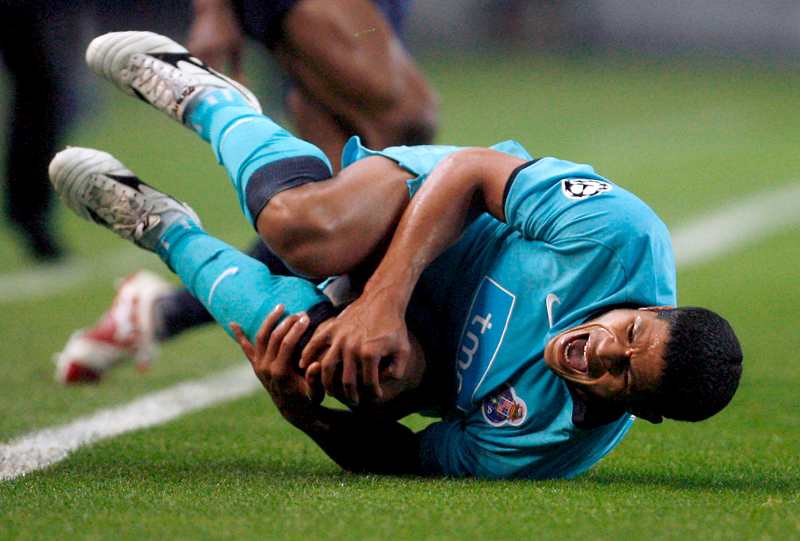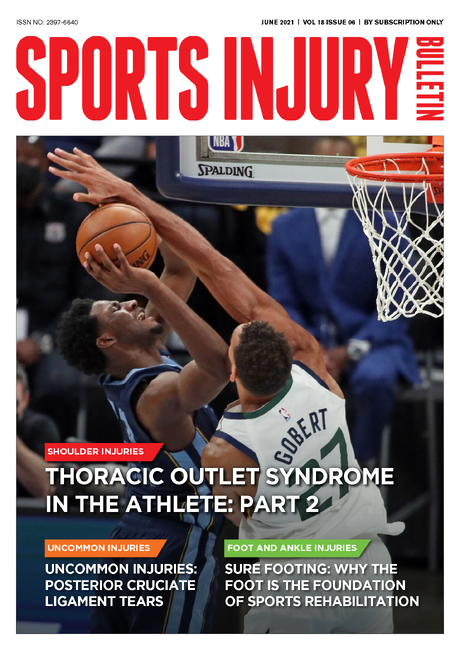You are viewing 1 of your 1 free articles. For unlimited access take a risk-free trial
Exercise bike training when injured
The best workout to maintain fitness when you’re injured.
The best workout to maintain fitness when you’re injured.
If you’re a runner and a minor injury prevents you from carrying out your regular running workouts for a couple of days, there’s no need to worry: the rest will probably do you some good.
Without a doubt, your best option is to climb aboard an exercise bike. There are simply more scientific studies demonstrating either a main-tenance - or an actual increase - in running fitness associated with using a bike in lieu of regular running workouts, compared with any other exercise device. The stair machine isn’t bad either, but we’ll have to consign it to second place; the trouble with stairs is that climbing can sometimes aggravate existing injuries like shin splints, knee soreness, and ITB friction syndrome (see page 1). Aquarunning places a quite distant third, primarily because many runners become suicidal at the thought of carrying out water-running workouts for more than a few days at a time.
The best workout to choose
Which bike workout is the best for maintaining/ increasing fitness? Without a doubt, it’s one in which you warm up thoroughly with 10 minutes of easy pedalling - and then embark on intense five-minute intervals, with five-minute recoveries.
How intense should these five-minute work intervals be? Well, your heart rate should increase gradually and steadily to 90 to 95 per cent of maximum during the first two minutes of the five-minute interval - and then remain in that zone for the final three minutes of the interval. Don’t forget, though, that your max heart rate on the bike is usually about 10 beats per minute slower than your max while running.
If you want to reckon your max heart rate on the bike fairly accurately, simply warm up with 10 minutes of moderate pedalling, and then pedal as furiously as you can for 2 minutes and 30 seconds. Pedal lightly for a minute to recover, and then operate at maximal intensity for another two and a-half minutes. Near the end of this second 150-second burst, you will be damn close to your max heart rate on the bike. Make sure you have a cardiologist standing by when you perform this test, though (just kidding: actually, make sure your doctor gives the OK before you try it).
How many of those five-minute intervals should you do per workout? Start with two your first time out, and don’t feel bad if you can only make it through four minutes or so - instead of the full five - on your initial intervals. Hard work on the bike takes some getting used to for most runners.
If you are injured for an extended period of time, you can gradually progress to five of these five-minute intervals per bike session, and you can then begin trimming the recovery intervals, a minute at a time, until you reach two minutes. Just make sure you are recovered enough to finish the full five minutes of each work interval - with your heart rate at 90 to 95 per cent of max for the last three minutes.
A good idea is to keep your pedalling speed at about 90 rpm, even as you get fitter on the bike, because such pedalling mimics the close-to-optimal rate of 90 strides per minute while running. As you get fitter, you will need to increase the bike’s resistance in order to keep your heart rate elevated and in the proper (90 to 95 per cent of max) zone. Carrying out this workout twice a week, in conjunction with three other - somewhat more temperate - bike sessions, should be enough to preserve almost all of your running fitness.
But, if your schedule permits, you could magnify your fitness even more with the following workout: After at least a 10-minute warm-up, pedal at close to maximal intensity for one minute, recover with 30 seconds of ’spinning’ at 90 rpm against very little resistance and then 60 seconds of easy pedalling (adding up to 90 seconds of recovery in all), and then blast along at very close to max for another minute. Continue this pattern - 60 seconds of maximal effort followed by 30 seconds of spinning and 60 seconds of light pedalling - until you have completed eight nearly all-out one-minute intervals. After a 10-minute cool-down, you’re done!
Over time, this workout can be made progressively harder by increasing the number of maximal 60-second repetitions to 15, increasing the resistance on the bike, and paring the recovery intervals to 60 seconds (30 seconds of spinning and 30 seconds of light strokes).
The bottom line? Time away from running doesn’t have to automatically lead to a loss of fitness. If you carry out the right workouts on the bike, you’ll come back from your injury as strong - or stronger - than ever.
Newsletter Sign Up
Testimonials
Dr. Alexandra Fandetti-Robin, Back & Body Chiropractic
Elspeth Cowell MSCh DpodM SRCh HCPC reg
William Hunter, Nuffield Health
Newsletter Sign Up
Coaches Testimonials
Dr. Alexandra Fandetti-Robin, Back & Body Chiropractic
Elspeth Cowell MSCh DpodM SRCh HCPC reg
William Hunter, Nuffield Health
Keep up with latest sports science research and apply it to maximize performance
Today you have the chance to join a group of athletes, and sports coaches/trainers who all have something special in common...
They use the latest research to improve performance for themselves and their clients - both athletes and sports teams - with help from global specialists in the fields of sports science, sports medicine and sports psychology.
They do this by reading Sports Performance Bulletin, an easy-to-digest but serious-minded journal dedicated to high performance sports. SPB offers a wealth of information and insight into the latest research, in an easily-accessible and understood format, along with a wealth of practical recommendations.
*includes 3 coaching manuals
Get Inspired
All the latest techniques and approaches
Sports Performance Bulletin helps dedicated endurance athletes improve their performance. Sense-checking the latest sports science research, and sourcing evidence and case studies to support findings, Sports Performance Bulletin turns proven insights into easily digestible practical advice. Supporting athletes, coaches and professionals who wish to ensure their guidance and programmes are kept right up to date and based on credible science.

